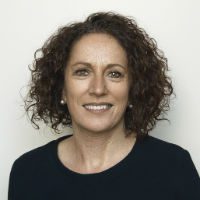28 Jan. 2018
Australia’s inequality crisis: Oxfam paper
Who said it is a crisis? The world's most favoured nations where living standards are at their highest all have substantial inequality. You ALWAYS have inequality. Even the old Soviet Union had its nomenklatura. You lift people up by working to increase economic efficiency, not by red-eyed envy of others.
What we read below is just one big paroxysm of hate for those who have done well. In the usual Leftist way, it is totally one sided, with no mention of the vast amount of tax that rich people pay or their many philanthropic activities. Mentioning that would undermine the hate.
Nor is there any mention of how people got rich -- usually by providing a new service or an improvement to existing services. The fact that very rich people keep emerging in Australia simply shows that Australia is a land of opportunity with few barriers to improved economic activity for those who have realistic business ideas and the energy to implement them
Oxfam seems to put out "reports" such as the one below annually. There was a very similar one at the beginning of last year. Oxfam was founded to help the poor but it now seems to be obsessed with the rich

The head of Oxfam in Australia is Helen Szoke, whose surname seems to have been taken from her Czechoslovakian adoptive parents. She had a rather distressed childhood, which probably had some role in making her a lifelong far-Leftist. You will, for instance, not see her telling anybody that Life is getting much, much better for the world's poor, however you want to measure it – whether it's in terms of average incomes, life expectancy, child mortality, disease, poverty, or women's rights. Leftists don't want to know about all that. They feed on grievance
She is a former head of the Victorian Equal Opportunity and Human Rights Commission. Her determinations there always seemed perverse, although carefully put.
A record number of Australian billionaires amassed an astonishing $38 billion increase in their wealth last financial year – enough money to pay for more than half of Federal public health spending, an Oxfam Australia briefing paper has revealed.
The briefing paper, Growing Gulf Between Work and Wealth, shows the number of Australian billionaires increased by eight to 33 last year – and has more than doubled over the past 10 years – while workers’ wages have stagnated.
Released as the world’s political and business leaders gather this week in Davos, Switzerland, for the World Economic Forum, the Oxfam analysis shows inequality in Australia is higher than at any time over the past two decades. The share of wealth held by the richest one per cent continues to rise, while wage growth for ordinary workers has slowed to record lows – barely keeping up with the cost of living.
“Oxfam is committed to tackling poverty and inequality – but a broken economic system that is concentrating more wealth in the hands of the rich and powerful, while ordinary people struggle to scrape by, is fuelling an inequality crisis,” Dr Szoke said.
“Over the decade since the Global Financial Crisis, the wealth of Australian billionaires has increased by almost 140 per cent to a total of $115.4 billion last year. Yet over the same time, the average wages of ordinary Australians have increased by just 36 per cent and average household wealth grew by 12 per cent.
“The richest one per cent of Australians continue to own more wealth than the bottom 70 per cent of Australians combined. While everyday Australians are struggling more and more to get by, the wealthiest groups have grown richer and richer.”
The Oxfam paper also highlights that the system is broken for workers in Australian global supply chains – trapping people in poverty, no matter how hard they work.
“This economic injustice is nowhere more apparent than in the clothing industry, where the people – mainly women – making clothes for household Australian brands are often paid poverty wages,” Dr Szoke said.
“A handful of the highest paid chief executives in the Australian clothing retail sector earn, on average, about $6 million a year. At the same time, many women working in Bangladesh to make the clothes sold by these brands take home a minimum wage of AUD $974 a year.
“Garment workers earning this minimum wage in Bangladesh – which falls far short of a living wage to cover the basics – would have to work more than 10,000 years to make the same amount that one of the highest paid Australian fashion retail CEOs made in 2017.”
Dr Szoke said to tackle the top end of this inequality crisis, the Federal Government must end cuts to corporate taxes and introduce tougher tax transparency laws that require companies to publicly report on income, profits and taxes for every country in which they operate.
To address the other extreme of the economic divide, Dr Szoke said Australian companies should commit to ensuring at least a living wage to workers in their supply chains – and to publishing a step-by-step strategy outlining how this would be achieved.
“Hard work is no longer a guarantee for a better life – the system is clearly not working for a majority of people,” Dr Szoke said. “The Federal Government and Australian companies cannot ignore this inequality crisis and must act to curtail the widening gulf between the super-rich and ordinary workers.”
Media release received via email
Go to John Ray's Main academic menu
Go to Menu of longer writings
Go to John Ray's basic home page
Go to John Ray's pictorial Home Page
Go to Selected pictures from John Ray's blogs